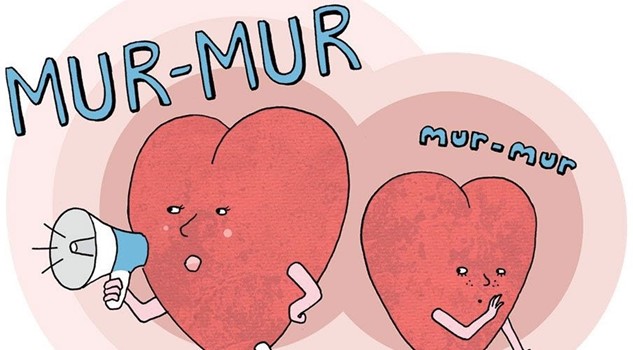Which of the following best describes a neuroblastoma?
Always causes urinary incontinence
Blood fed
Tiny
Unfortunately, much of the time, by the time a diagnosis has been made, metastasis has already occurred
The Correct Answer is D
Choice A: Urinary incontinence is a condition of involuntary loss of urine control, which can be caused by various factors, such as nerve damage, bladder dysfunction, or medication side effects. It is not always caused by neuroblastoma, which is a type of cancer that arises from immature nerve cells.
Choice B: Blood-fed is not a term that describes a neuroblastoma. Neuroblastoma is a type of cancer that arises from immature nerve cells, which can form tumors in various parts of the body, such as the adrenal glands, abdomen, chest, or spine.
Choice C: Tiny is not a term that describes a neuroblastoma. Neuroblastoma can vary in size and shape depending on the location and stage of the tumor. Some neuroblastomas can be very large and cause compression of nearby organs or structures.
Choice D: Unfortunately, much of the time, by the time a diagnosis has been made, metastasis has already occurred. This statement describes a neuroblastoma accurately. Neuroblastoma is a type of cancer that arises from immature nerve cells, which can spread rapidly to other parts of the body, such as the bones, liver, lymph nodes, or skin.
Metastasis is the process of cancer cells breaking away from the original tumor and forming new tumors elsewhere. Neuroblastoma often has no specific symptoms until it has metastasized, making it difficult to diagnose early and treat effectively.
Nursing Test Bank
Naxlex Comprehensive Predictor Exams
Related Questions
Correct Answer is ["B","C"]
Explanation
Choice A: Clubbing of the nail beds is not a finding that the nurse should expect in a child who has aortic stenosis, which is a condition that causes narrowing of the aortic valve and obstructs blood flow from the left ventricle to the aorta. Clubbing of the nail beds is a sign of chronic hypoxia, which can occur in conditions that affect the lungs or the right side of the heart.
Choice B: Murmur is a finding that the nurse should expect in a child who has aortic stenosis, as it indicates turbulent blood flow through the narrowed valve. A murmur can be heard with a stethoscope over the chest and may vary in intensity, pitch, and duration. A murmur caused by aortic stenosis is typically systolic, loud, and harsh and radiates to the neck or back.
Choice C: Weak pulses are a finding that the nurse should expect in a child who has aortic stenosis, as they indicate reduced blood flow and pressure in the peripheral arteries. Weak pulses can be felt with palpation of the radial, brachial, femoral, or pedal arteries and may be difficult to detect or absent.
Choice D: Bradycardia is not a finding that the nurse should expect in a child who has aortic stenosis, as it indicates a slow heart rate, which is less than 60 beats per minute in children. Bradycardia can occur in conditions that affect the electrical conduction system of the heart or cause increased vagal tone. A child who has aortic stenosis may have tachycardia, which is a fast heart rate, as a compensatory mechanism to increase cardiac output.
Choice E:Hypertension is not typically associated with aortic stenosis in children; instead, the condition often results in reduced blood pressure distal to the valve.

Correct Answer is A
Explanation
Choice A:In actual practice, log rolling is typically done every 2 hoursto align with standard nursing protocols for preventing complications such as pressure injuries, maintaining skin integrity, and ensuring patient comfort. Repositioning every 2 hours also helps promote better circulation and reduces the risk of complications like pneumonia and deep vein thrombosis (DVT).
as a unit without twisting or bending the spine. The nurse should use a draw sheet and at least two other staff
members to assist with log rolling.
Choice B: This intervention is incorrect, as keeping the head of the bed at a 30-degree angle can cause flexion of the spine and compromise spinal alignment. The head of the bed should be kept flat or slightly elevated, depending on the provider's orders and the client's comfort. The nurse should avoid raising or lowering the head of the bed without checking with the provider first.
Choice C: This intervention is unnecessary, as placing the client in protective isolation is not indicated for a client who is postoperative following scoliosis repair with Harrington rod instrumentation. Protective isolation is used for clients who have compromised immune systems and are at high risk of acquiring infections from others, such as transplant recipients, cancer patients, or patients receiving immunosuppressive therapy. The nurse should follow standard precautions and surgical site care to prevent infection in this client.
Choice D: This intervention is optional, as initiating the use of a PCA pump for pain control may or may not be appropriate for a client who is postoperative following scoliosis repair with Harrington rod instrumentation. A PCA pump is a device that allows the client to self-administer a preset dose of analgesic medication by pressing a button. A PCA pump can provide effective and individualized pain relief, but it requires careful monitoring and education. The nurse should assess the client's pain level, preference, and ability to use a PCA pump and consult with the provider before initiating it.
Whether you are a student looking to ace your exams or a practicing nurse seeking to enhance your expertise , our nursing education contents will empower you with the confidence and competence to make a difference in the lives of patients and become a respected leader in the healthcare field.
Visit Naxlex, invest in your future and unlock endless possibilities with our unparalleled nursing education contents today
Report Wrong Answer on the Current Question
Do you disagree with the answer? If yes, what is your expected answer? Explain.
Kindly be descriptive with the issue you are facing.
